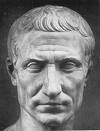The rule of three describes triads of all types — any collection of three related elements. Two more specific triad variants are hendiatris and tricolon.
Hendiatris
A hendiatris is a figure of speech where three successive words are used to express a central idea.
Examples of hendiatris include:
- “Veni, vidi, vici.” [Julius Caesar]
- “Liberté, Égalité, Fraternité“ [French motto]
- “Citius, Altius, Fortius” [Olympic motto]
- “Wine, women, and song” [Anonymous]
Tricolon
A tricolon is a series of three parallel elements (words or phrases). In a strict tricolon, the elements have the same length but this condition is often put aside.
Examples of tricola include:
- “Veni, vidi, vici.” [Julius Caesar]
- “Be sincere, be brief, be seated.” [Advice for speakers from Franklin D. Roosevelt]
- “Tonight, we gather to affirm the greatness of our nation – not because of [1] the height of our skyscrapers, or [2] the power of our military, or [3] the size of our economy.” [Barack Obama, Keynote speech to Democratic National Convention, July 2004]































